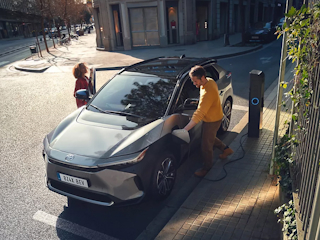April 28, 2025
Coming out of Google Cloud Next, I’ve been reflecting on how far AI has come — and how close we are to making it truly useful across the enterprise.
The announcements this year weren’t just about what’s technically possible. They were focused on how we can apply enterprise AI solutions to solve real problems, streamline experiences and deliver measurable value.
Here are a few of the updates I’m most excited about and why I think they matter:
AgentSpace and the Agent2Agent protocol
Google’s launch of AgentSpace and the Agent2Agent protocol marks a big shift from AI that works in isolation to AI that can coordinate and act across systems.
This opens up the ability to create specialized AI agents that can work together. Each would be focused on a task but designed to collaborate in real time.
Picture a typical internal service issue:
-
An employee logs a ticket in ServiceNow.
-
One agent picks up the incident and surfaces trends.
-
Another agent looks at related data from the CRM, commerce system or Jira to find root causes.
-
A third notifies the right teams.
-
A fourth drafts a proactive message to impacted users.
That level of orchestration removes friction, shortens resolution time and creates a more responsive, seamless experience for employees.
Generative AI for video, image, speech and music in Vertex AI
Google also introduced expanded generative media tools in Vertex AI, including text-to-video, image editing, voice generation and even music creation.
These capabilities are incredibly useful for teams responsible for personalization and content at scale.
A few examples:
-
Automotive. Auto brands can generate short videos that highlight vehicle features tailored to a buyer’s concerns about things like safety, performance or in-vehicle tech.
-
Retail. Beauty and apparel companies can localize tutorials and promotions with AI-generated visuals and voiceovers across regions and languages.
-
Public sector. A transportation department could use AI to produce real-time service alerts that turn static data into short videos or interactive visuals to keep passengers informed.
The result? Faster content creation, lower production costs and more personalized experiences for customers.
Customer Engagement Suite enhancements
Google also rolled out updates to its Customer Engagement Suite. This makes it even easier to embed AI into customer journeys across channels and at scale.
Here’s what that might look like:
-
A retailer sends personalized product offers via email and mobile based on real-time customer activity.
-
A bank proactively reaches out with the right information at the right moment, whether it’s during onboarding, an investment reminder or an account alert.
-
Support teams resolve common issues faster with automated assistants while more complex cases are routed efficiently to the right experts.
These are the kinds of changes that lead to higher engagement, better conversion and stronger loyalty. When customers feel like a brand knows them and respects their time, that’s where value is created.
How to get started with enterprise AI
The hardest part isn’t imagining what AI can do. It’s figuring out where to begin. My advice: Keep it simple, focused and collaborative.
Start with a use case that matters
Choose a business challenge where AI can deliver real, measurable value. AI can help to drive growth, reduce costs or reduce risk. Prioritize based on business impact, feasibility and alignment. Tools like Weighted Shortest Job First (WSJF) can help.
Get your data ready
Even the best AI can’t perform without solid data foundations. That means cleaning up fragmented systems, resolving conflicting definitions and making sure your teams have access to consistent, trusted data. For organizations that still have a lot of work to do to clean up their data, this work should be done iteratively to enable the highest priority use cases that will drive the most ROI.
Align early across business, IT and data teams
AI can’t live in a silo. It works best when business and IT come together from the start, with shared ownership of the problem, the roadmap and the results.
Start small. Learn quickly.
Run a pilot, gather feedback, refine and expand from there. Think proof of value instead of proof of concept. The goal is to move from experimentation to production with purpose.
Final thoughts
There’s no question AI is moving quickly. What stood out to me at Google Next was how much of it is ready to use now. What matters most is how we apply it: not for novelty, but for real outcomes.
This is an opportunity to reduce complexity, unlock better experiences and drive growth in ways that weren’t possible before. With the right foundation and a clear focus, AI becomes a tool for driving meaningful, lasting change.










